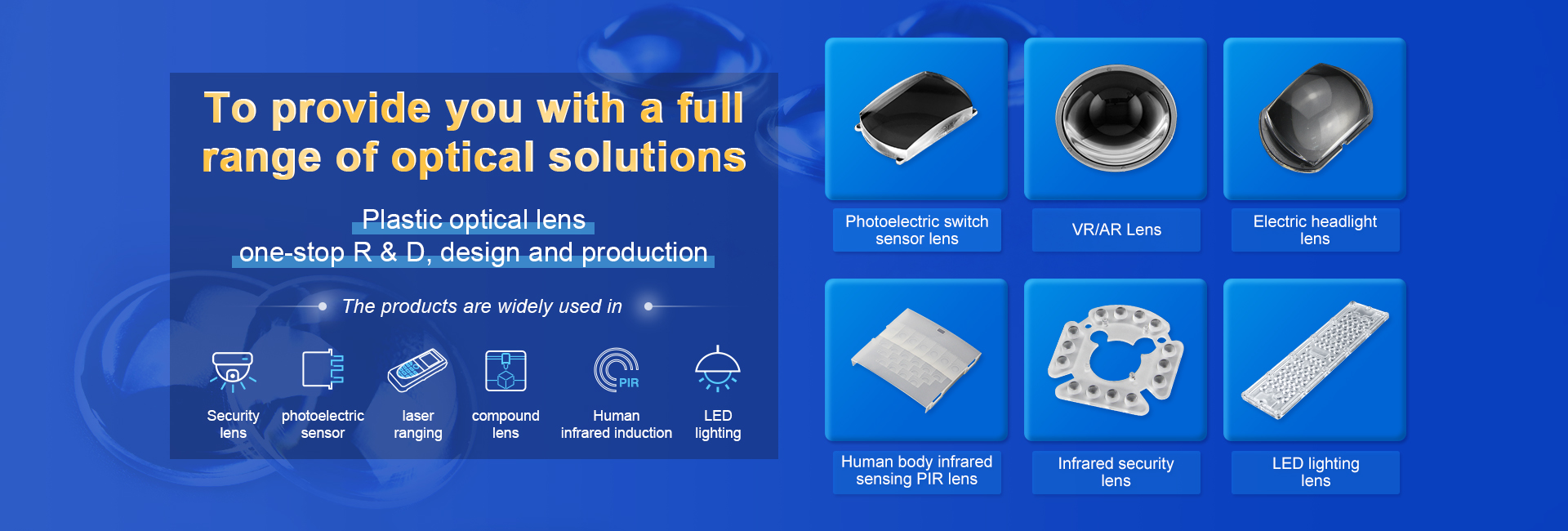How to clean and maintain laser lenses
Time:2020-09-03 来源:Dongguan Lianlong Optoelectronic Technology Co.Ltd
It is a consumable product to protect the lens in the optical path system of the laser cutting machine. In order to reduce the use cost as much as possible, the lens should be cleaned in strict accordance with this specification. During the cleaning and replacement process, care should be taken to avoid contamination or damage to the lens when placing, testing, and installing the protective lens. After the new lens is installed, the protective lens should be checked regularly and cleaned in time.
Laser lens
Take the following preventive measures daily:
1. Before removing the protective lens, ensure that the area around the window of the protective lens of the cutting head is clean, and no fan should blow towards the cutting head, so as to prevent dust from being brought into the cutting head by the air when removing the protective lens, causing internal pollution;
2. Do not use your bare fingers to install the lens, please wear powder-free finger cots or rubber/latex gloves;
3. Do not touch the film and mirror when taking the lens. Hold the edge of the lens and place the lens on the lens cleaning paper;
4. Avoid talking above the lens, and keep all pollutants away from the working environment as much as possible;
5. When cleaning the lens, try to operate in a dust-free environment (cleaning agents such as absolute ethanol will only dissolve the dirt and will not damage the lens).
Cleaning accessories
step 1
Flexible cleaning of lenses with light pollution (dust, nits)
Use a blowing air bag or cleaning air to blow off the contaminants scattered on the surface of the lens. If this step fails to remove the pollution, please continue to step 2.
Note: Avoid using air ducts in the workshop because they usually contain a lot of oil and water. These contaminants can form a harmful absorption layer on the surface of the lens.
Step 2
Flexible cleaning for lightly contaminated lenses (stains, fingerprints)
Soak an unused special cotton swab with a cleaning agent such as acetone or absolute ethanol, and gently wipe the surface of the lens (do not rub hard), and slowly drag the wet cotton on the surface of the lens, so that the liquid behind the wet cotton can be used immediately evaporation. This will leave no traces. If the contaminants are not removed at this step, continue to step 3.
Note: Only use pure paper swabs with swab bodies (Q-tip brand cotton swabs are recommended) or polyester fiber swabs. It is recommended to use reagent grade acetone and absolute ethanol and other cleaning agents).
Step 3
For moderately contaminated lenses (saliva, oil), perform a moderate-intensity cleaning. Use 6% distilled white vinegar to soak an unused cotton swab and wipe the surface of the lens with light pressure. Use a clean dry cotton swab to wipe off excess distillation on the surface of the lens Vinegar, then use a cotton swab soaked in acetone to gently wipe the surface of the lens to remove all acetic acid. If this step does not remove contaminants, please continue.
Step 4
Strongly clean the heavily contaminated (spatter) lenses (Note: Step 4 must not be used for new or unused laser lenses. Only the lenses are heavily contaminated during use, and after step 2 or step 3 is performed This step can only be used when an acceptable cleaning effect is not obtained, and there is no guarantee that the lens can be used normally after step 4). Severely contaminated or dirty lenses may need to use optical polishing fluid to remove contaminants on the lens surface.
1. Fully shake the polishing liquid container before use. Pour out four to five drops of polishing liquid and place them on a cotton ball. On the surface of the lens that needs to be cleaned, use the weight of the cotton ball to gently move the cotton ball in a circular motion (do not press the cotton ball!). Please keep rotating the lens to avoid excessive polishing in a certain direction. The time to clean the lens should not exceed half a minute. If you find that the color of the lens surface has changed during this step, it means that the outside of the lens film has been corroded and you should stop cleaning immediately.
2. After using the polishing liquid, soak an unused cotton swab with distilled water, and then gently wipe the surface of the lens with it, thoroughly wet the surface of the lens, and remove the polishing liquid residue as much as possible. Do not let the lens surface become dry. This will increase the difficulty of removing polishing liquid residues.
3. Quickly moisten a cotton swab with absolute ethanol, and then gently clean the surface of the lens with it. Cover the entire surface with the head of the cotton swab to remove as much polishing fluid residue as possible.
4. Soak the cotton swab with acetone, and use it to clean the surface of the lens to remove all the absolute ethanol and polishing liquid residue remaining in the cleaning process. When using acetone for the final cleaning, please gently drag the cotton swab on the surface of the lens to wipe away the original traces until the entire surface is wiped clean. Use the cotton swab to make the last wiping action, which should be moved slowly
Move to ensure that the surface behind the swab can dry immediately, which can eliminate surface streaks. Certain types of pollution or damage (such as metal spatter, potholes, etc.) cannot be removed. If the surface of the lens is contaminated or damaged and cannot be cleaned and restored, the cleaning should be abandoned and replaced with a new lens to ensure the cutting quality.



